Timeline – from 1919 to 1945
Fasci di Combattimento foundation
The Fascist Movement is created in San Sepolcro square, Milan.
The Fascists march on Rome
King Vittorio Emanuele III appoints Benito Mussolini to form a new government
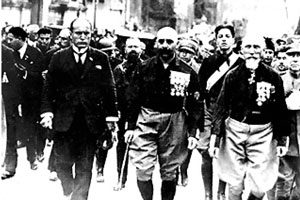
Matteotti assassination
Giacomo Matteotti, MP and Unitarian Socialist Party secretary, is killed few days after his famous speech about electoral violations during the elections held on April 6th, 1924. The political assassinations perpetuated by the State begin.
Adolf Hitler becomes Chancellor of the German 3rd Reich
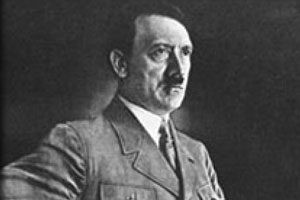
Institution of the first German concentration camp at Dachau (Munich) for enemies of the regime
Enactement of the Nazi anti-Jewish ``Nuremberg`` laws
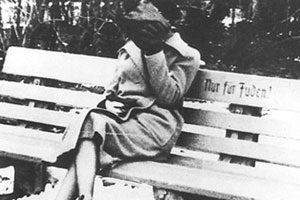
War in Ethiopia
In an effort to strengthen its origin myth, the reincarnation of the Roman Empire, Fascism tries to conquer Abissinia. During these years the italian Army commits several war crimes.
Publication of the ``Manifesto of Race``
Special census of Italian Jews
Il Grand Council of Fascism approves the ``Declaration of Race``
The Italian Council of Milisters approves the second group of anti-Jewish provisions
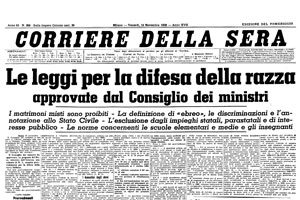
The ``night of broken glass``
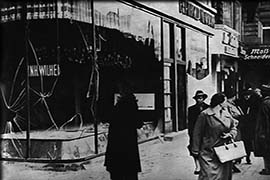
German pogrom against the Jews known as “Kristallnach”
Germany invades Poland
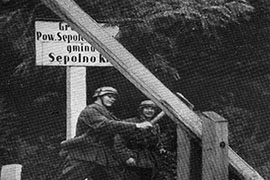
The Second World War begins
Germany invades Denmark, Norway, France, Holland, Belgium and Luxembourg
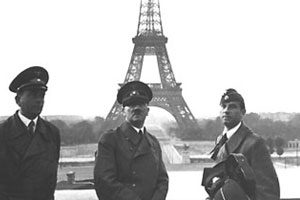
Italy joins the Second World War
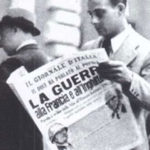
Initial implementation of Nazi policy
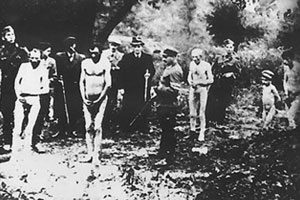
Initial implementation of Nazi policy to exterminate the Jews by mass shootings and gassing trucks in the controlled territories.
Japan attacks the Usa base in Pearl Harbour
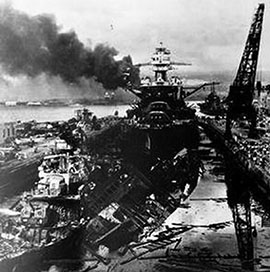
America’s declaration of war alongside the Allied Forces
Dicussions to implement the ``Final Solution`` in Wannsee
Wannsee (Berlin): the Nazi hierarchs meet to discuss implementation of the “Final Solution to the Jewish Question” in Europe.
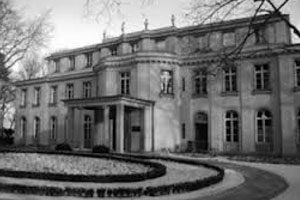
The Allies land in Sicily
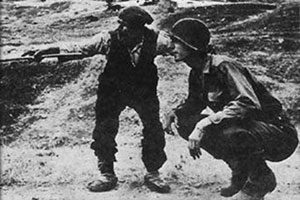
Persecution of the Jews ceases in the liberated zones.
Establishment CLN (Comitato di Liberazione Nazionale – National Liberation Committee).
The gas chamber in Krematorium II at Auschwitz-Birkenau goes into operation
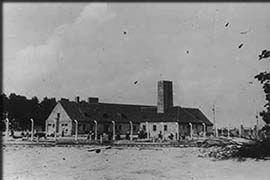
Dismissal from office and subsequent arrest of Mussolini
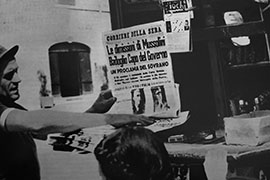
The king asks Pietro Badoglio to form a new government.
: Announcement of the signing of the armistice between the Kingdom of Italy and the Allies
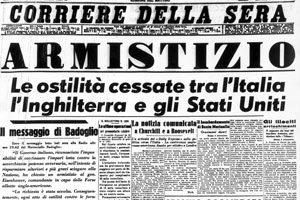
The king and government of Italy flees to southern Italy
Germans occupy the Peninsula
In the regions of Trieste and Trento, the Germans institute the Operationszonen Adriatisches Küstenland and Alpenvorland, implementing their own anti-Jewish policies. The Risiera di San Sabba in Trieste is initially used as an internment camp. (Stalag 339); in late October it is converted into a Polizeihaftlager (police detention camp) used for the internment and execution of hostages, partisans, political prisoners and Jews, for rerouting deportees to Germany or to Poland, and for storing looted property.
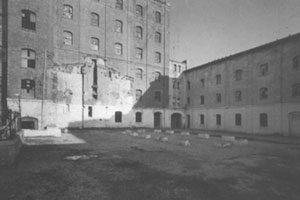
Souther Itaky and sardinia are free
First deportation of Jews arrested in Italy
First deportation of Jews arrested in Italy (from Merano) and first slaughter of Jews in Italy (on the Piedmont side of Lake Maggiore), both carried out by the Nazi forces.
Italy is divided in two
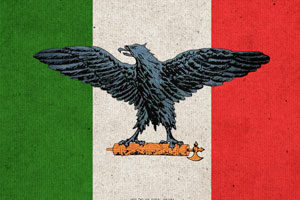
Constitution of a new Fascist government under the leadership of Mussolini assuming administration of central and northern Italy. The new state takes the name of Repubblica Sociale Italiana (RSI).
The Reign of Italy declares war to Germany
San Sabba (Trieste)
The first deportees are executes in the former rice storages, which hace turned into Lager
The German police round up Jews in Rome
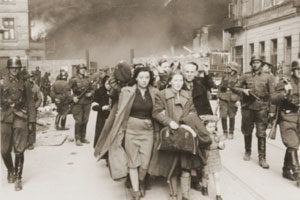
Two days later, over 1000 people are deported to Auschwitz. Other deportation trains leave from cities in central and northern Italy
The first Italian convoy RSHA to Auschwitz-Birkenau departs from Rome
The convoy arrives on 23 October with 1023 Italian Jews
The Italian concentration camp at Fossoli goes into operation
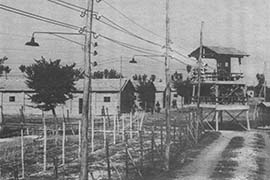
The first train load of deported Jews leaves from Milan
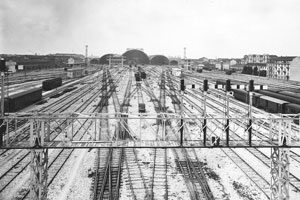
The train carries 169 people bound for Auschwitz. Six will survive.
Dalla Stazione Centrale di Milano parte il secondo convoglio di ebrei
The second train of deported Jews leaves from Milan for Auschwitz. The train carries 605 deportees.
Arrival at Auschwitz-Birkenau
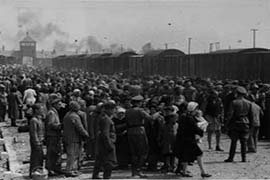
The train that left Milan on 30 January arrives at Auschwitz-Birkenau. 477 people are sent immediately to the gas chambers.
Partenza dei primi convogli di deportazione da Fossoli (per Bergen Belsen e Auschwitz) organizzati dalla polizia tedesca
Inizia il funzionamento del forno crematorio del campo di concentramento di San Sabba
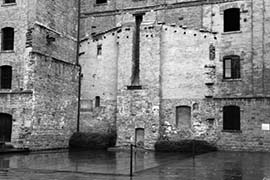
Roma, Fosse Ardeatine
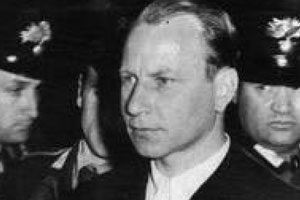
Per rappresaglia conseguente all’attentato partigiano di via Rasella, nel quale morirono 33 soldati tedeschi, su ordine di Herbert Kappler vengono giustiziate 335 persone: civili militari e 57 ebrei, “meritevoli di morte” (todeskandidaten) per “reato razziale”
Liberazione di Roma
Le truppe alleate entrano a Roma dove, il giorno successivo, sfileranno trionfalmente
Sbarco degli Alleati in Francia
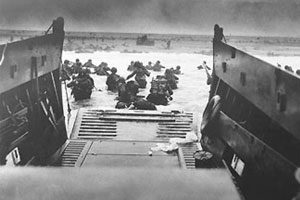
Gli Alleati sbarcano nella Francia del nord: gli americani nel Cotentin, gli inglesi in Normandia. Inizia l'”Operazione Overlord”, nome in codice assegnato al piano di invasione d’Europa, per la sua liberazione dall’oppressione nazista
Chiusura di Fossoli e trasferimento del campo nazionale a Bolzano
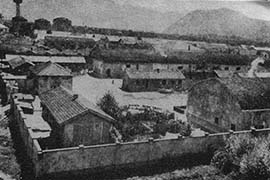
I russi alle porte di Auschwitz-Birkenau
Per non lasciare testimoni, i prigionieri di Auschwitz-Birkenau vengono fatti evacuare da Auschwitz-Birkenau verso i campi di concentramento che sorgono nelle zone ancora sotto il controllo tedesco. È l’inizio delle cosiddette “marce della morte”
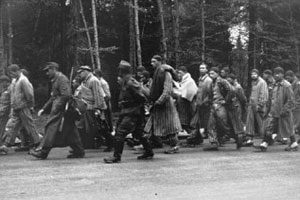
I soldati dell’Armata Rossa entrano in Auschwitz-Birkenau
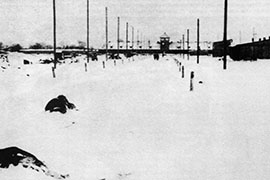
Vi trovano solo quei deportati lasciati dalle SS in ritirata perché ritenuti incapaci di prendere parte alle marce di ripiegamento verso i territori interni del Reich (le cosiddette “marce della morte”). Giunti a Birkenau vedono le rovine ancora fumanti del settore Kanada II, dove erano siti i magazzini degli oggetti predati agli ebrei
Last train of deportees leaves from Milan directed to the Nazi lager of Bolzano
Last train of Jewish deportees leaves Italy from the Risiera di San Sabba bound for Bergen Belsen
Liberation of northern Italy
The end of war in Italy
In Italy, The National Liberation Committee of Upper Italy (CLNAI) officially proclaimed the insurgency in a radio announcement
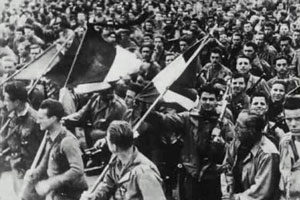
Mussolini and a group of fascists and German soldiers set out for Switzerland, intending to escape to Spain
In Germany, Soviet and US troops met in southern Berlin
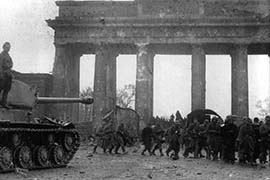
Suicide of Adolf Hitler
As the Soviet forces were about to take Berlin, Hitler killed himself in his Führerbunker
The end of war in Europe
Admiral Karl Dönitz, appointed by Hitler as his successor, made a nationwide radio address in which he announced the occupation of Germany by the Allies and the end of World War II in northwestern Europe
Beginning of the Nuremberg Trials: the series of trials aimed at bringing Nazi war criminals to justice
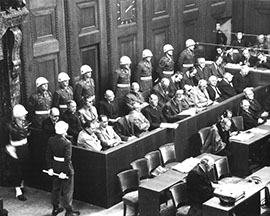
A series of criminal trials was held before an International Criminal Court in the city of Nuremberg (Germany) until 1 October 1946
22 of the accused were judged: 12 were sentenced to death by hanging, 3 to life imprisonment, others received minor prison sentences, while 3 people were acquitted
Atomic bombings of Hiroshima and Nagasaki
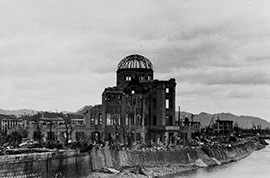
The United States detonated two nuclear weapons over the Japanese cities of Hiroshima and Nagasaki. 77,000 people died and, as a consequence, Japan announced its surrender to the Allies; war ended also in Asia
